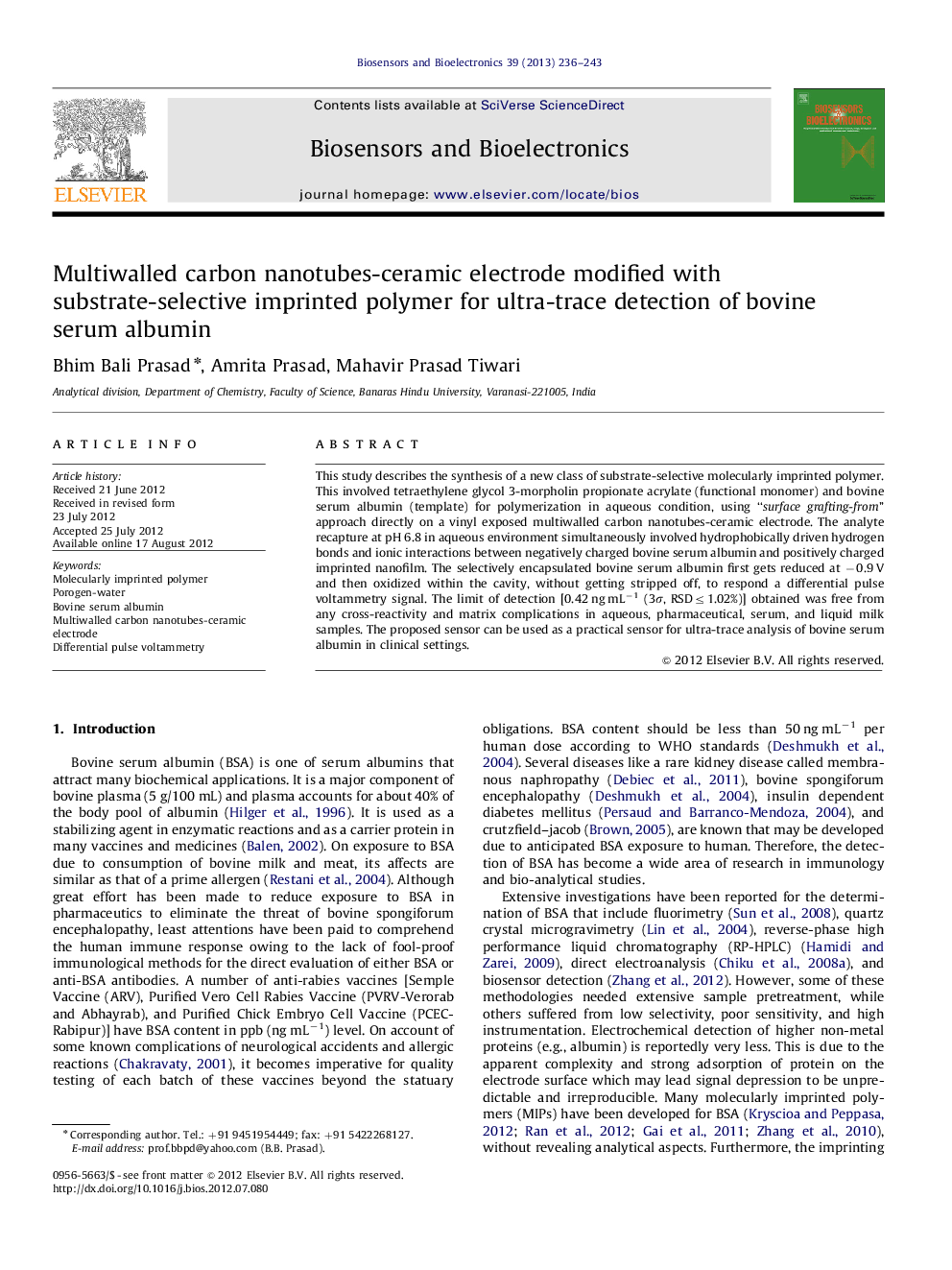| Article ID | Journal | Published Year | Pages | File Type |
|---|---|---|---|---|
| 867236 | Biosensors and Bioelectronics | 2013 | 8 Pages |
This study describes the synthesis of a new class of substrate-selective molecularly imprinted polymer. This involved tetraethylene glycol 3-morpholin propionate acrylate (functional monomer) and bovine serum albumin (template) for polymerization in aqueous condition, using “surface grafting-from” approach directly on a vinyl exposed multiwalled carbon nanotubes-ceramic electrode. The analyte recapture at pH 6.8 in aqueous environment simultaneously involved hydrophobically driven hydrogen bonds and ionic interactions between negatively charged bovine serum albumin and positively charged imprinted nanofilm. The selectively encapsulated bovine serum albumin first gets reduced at −0.9 V and then oxidized within the cavity, without getting stripped off, to respond a differential pulse voltammetry signal. The limit of detection [0.42 ng mL−1 (3σ, RSD≤1.02%)] obtained was free from any cross-reactivity and matrix complications in aqueous, pharmaceutical, serum, and liquid milk samples. The proposed sensor can be used as a practical sensor for ultra-trace analysis of bovine serum albumin in clinical settings.
► Synthesis of MIP-based biomimetic electrochemical sensor for BSA determination. ► Aqueous polymerization using “surface grafting from” approach at MWCNTs-CE. ► Ultra-trace analysis LOD 0.40 ng mL−1 achieved. ► Selectively encapsulated BSA responded quantitative DPV signal in real samples.
